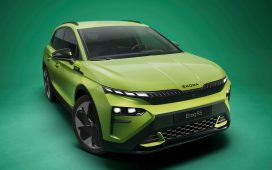
Electric unmanned aerial vehicles (UAVs) are versatile for industrial applications
but face performance challenges. A new collaboration is scaling an efficient and long-lasting
hydrogen storage solution for UAVs.
The National Renewable Energy Laboratory (NREL) embarked on a year-long collaboration
with Honeywell Aerospace in 2023 to prototype and support the commercialization of
a novel cartridge-based hydrogen fuel storage solution for UAVs. The project, Fuel
Additives for Solid Hydrogen (FLASH) Carriers in Electric Aviation, is a new hydrogen
carrier technology developed at NREL within the HyMARC Energy Materials Network and is funded by the U.S. Department of Energy (DOE) Office
of Energy Efficiency and Renewable Energy’s Hydrogen and Fuel Cell Technologies Office
through DOE’s Technology Commercialization Fund.
Improving UAVs With Hydrogen Solutions
Electric UAVs are seeing incredible growth in industrial applications, such as surveying,
maintenance, and security. Many of these applications previously required ground-based
vehicles or inefficient use of piloted helicopters. For short-range applications,
drones offer greater efficiency, reliability, and precision than conventional combustion-driven
aircraft. For long-range and heavy payload applications, however, battery-powered
electric UAVs today fall short. The NREL-Honeywell Aerospace collaboration seeks to
prove that hydrogen can help address these challenges.
Today’s long-range drones are typically powered by combustion engines. While they
provide the required range that battery-powered electric UAVs lack, these engines
have issues with excessive noise, vibration, and emissions, including carbon emissions.
FLASH seeks to deliver an alternative approach, in which efficient and long-lasting
hydrogen storage is coupled to a fuel cell that continuously converts hydrogen to
electricity to power electric UAV flight. That system would enable long-range flights,
but without the carbon emissions of combustion engines. It would also enable sensitive
drone applications like atmospheric monitoring, where exhaust gases and rumbling engines
would reduce performance.
FLASH is based on a solid material that can rapidly release hydrogen gas as a fuel.
The material has a high hydrogen capacity and can operate at low temperatures (approximately
100°C). “This class of materials is remarkably tunable and therefore highly versatile
to industrial hydrogen delivery requirements,” said Noemi Leick, NREL’s principal
investigator on the project.
Compared to past proposals for using hydrogen in drones, FLASH represents a significant
breakthrough. Storing hydrogen in bulky, compressed gas tanks is an obstacle to engineering
compact drones. The FLASH hydrogen storage technology and fuel cell could be bundled
in a single, swappable cartridge that looks just like the batteries UAV owners are
used to but offers dramatically longer flight times. Honeywell Aerospace has already
developed solid-state cartridge fuel systems for drones and is looking to improve
their performance with the unique low-temperature, fast-release technology of FLASH.
“This is an exciting opportunity to demonstrate the performance of hydrogen storage
materials that we developed in our laboratory to fuel a real-life flying vehicle,”
said Katherine Hurst, NREL senior scientist and group manager.
Currently, FLASH operates as a one-way fuel that, once spent, needs to be recycled
or refilled. A project in NREL’s Laboratory Directed Research and Development program
is currently examining methods to recycle the fuel using electrochemical processes
that could ultimately be powered with renewables.
Potential Market Impacts of FLASH
If the NREL-Honeywell project is successful, FLASH will be qualified for future technological
development in optimization, scaling, and cost reduction. This work supports decarbonization
of the aviation sector and the creation of high-tech jobs in the United States. Some
of the potential large-use cases for hydrogen-fueled UAVs include inspections of electric
power lines, gas pipelines, solar panel farms, wind turbines, and other applications
where flying on long missions, beyond the line of sight of the operator, would save
money and improve reliability, lowering the cost of renewable energy applications.

lab at the Solar Energy Research Facility. Photo by Dennis Schroeder, NREL
“This partnership with NREL is the latest example of how Honeywell is driving the
future of sustainable aviation,” said Dave Shilliday, vice president and general manager
for Urban Air Mobility and Uncrewed Aerial Systems at Honeywell Aerospace. “Hydrogen
can offer significant advantages for eVTOL systems in terms of endurance and range.
Additionally, using hydrogen as a power source can also significantly expand the possibilities
of UAVs beyond the limitations posed by battery-electric powertrains. Honeywell will
work with NREL to develop the necessary hydrogen related technology to contribute
to the further growth of the industry.”
Honeywell Aerospace will provide the technological expertise, platform materials testing
for fuel cartridge technology, supply chain logistics insight, prototyping, and fuel
cell evaluation to qualify FLASH for further development. In Phase I of the project,
NREL will provide technical expertise on FLASH formulations, fabrication, and characterization
of the hydrogen fuel storage.
Taken together, the collaborative research will determine the most promising FLASH
formulations, develop a prototype FLASH fuel cartridge for Honeywell application platforms,
and conduct a fuel cell test with the FLASH cartridge.
“This is a dream project for a national lab researcher,” said Steve Christensen, one
of the NREL leads on the project proposal. “Honeywell Aerospace has already built
and tested devices that can use our materials, giving us the chance to drop our technology
directly into their systems and move this promising drone fuel toward commercialization
through collaborative R&D. We and our partners at DOE are very excited at this opportunity
to see DOE’s support of hydrogen technologies result in a market application.”
A non-provisional patent application on FLASH was filed with the U.S. Patent and Trademark
Office. Through the support of this TCF award, Honeywell Aerospace will have the foundation
to continue the development of FLASH toward commercial deployment.
Learn more about NREL’s hydrogen and fuel cell and sustainable aviation research.











